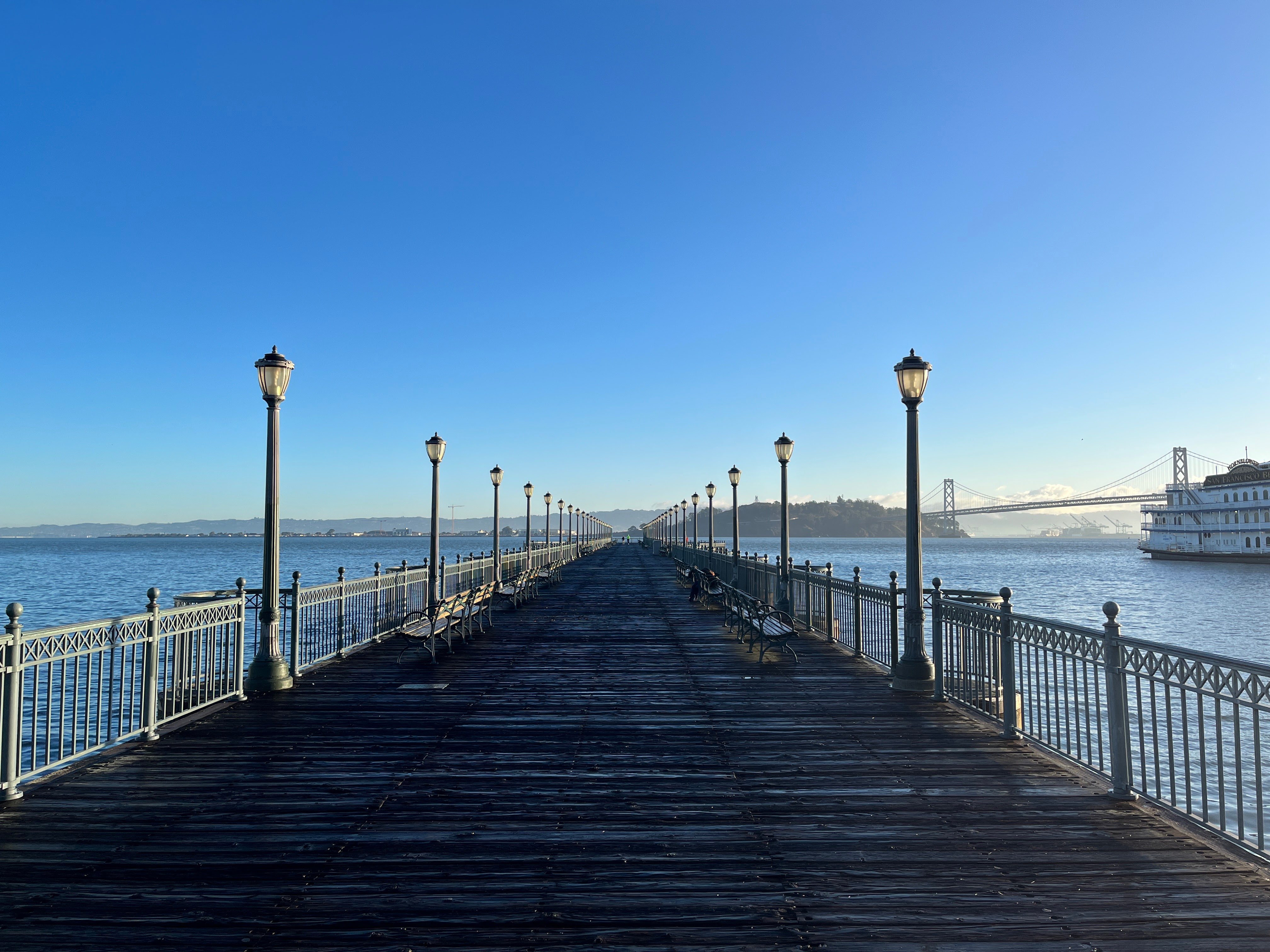
It could be mere curiosity, it could be interest as more people I’ve talked to have been getting out walking in the elements, but let’s be honest: it’s probably that Christmas is a few short weeks away and people are getting desperate. Either way, I’ve been getting a bunch of questions from people on gear. From general questions on what types are good for particular situations to specific brand and item recommendations, people have asked what works and what doesn’t.
Before I get to the more specific recommendations, let me answer a few common questions up front:
Q: Why do you have multiple versions of the same items? Two hoodies, for example.
A: In a couple of cases it’s pretty simple: it’s good to have more than one t-shirt, for example, merino wool or no.
But in cases like hoodies, hats, jackets and so on, it’s a different tools for different purposes thing. Aside from things like t-shirts, underwear and so on, I don’t have duplicates of the same item, I have slightly different versions. Even subtle differences in the weight of a midweight hoodie versus a heavier weight option make them better or worse options depending on conditions.
Q: Isn’t all this gear expensive? How do you fund it?
A: It sure is, and the answer is over time. The number one rule for me, at least, is simple: if I already have something workable, use that. I got my hard shell, for example, as a Christmas present in 1998, my soft shell is 15 or 16 years old, and my down coat is 11 or 12 years old – and all three have been repaired at least once by the original manufacturers.
The clothing I’ve needed to add, meanwhile, I’ve bought slowly and tactically. A hoodie one month; t-shirts another. A quarter zip and gloves later. And with rare exceptions, it’s all come out of my own personal corner of our budget so I’m not impacting our household finances at all. Other strategies include shopping at outlets (all of my Patagonia gear has come from the Freeport outlet, for example), birthday or Christmas presents, waiting for sales and other discounts (speaking of, if you want 20% off any of the Woolx stuff mentioned below, click here), or buying things used.
It’s taken a year and a half, but I now have almost everything I could need for the conditions I’m most likely to face and the gear I’ve bought should last a long while – with the notable exception of my shoes. Those wear out faster than anything else, alas, and I look at them basically as an unavoidable expense.
Q: Do I need a bunch of gear to get going?
A: Absolutely not. When I got started, almost everything I was wearing was cotton and the running shoes I was using were four years old. You’re better off just getting started with whatever you have on hand. As walking’s grown into a steadier habit for me, however, I’ve chosen to invest in things that both make me more comfortable and make it possible for me to get out in conditions that would otherwise be problematic. But when I got started, it was soft pants, a Carharrt hoodie and my insulated work gloves that were more leaf than leather.
As Arthur Ashe put it, “start where you are, use what you have, do what you can.”
Q: Isn’t this a lot of gear? I don’t use this much when running, skiing, etc.
A: Right, but you don’t generate nearly as much body heat when walking, so in cold temps you may need to compensate with more clothing than you would otherwise.
Q: Why do all of this? Isn’t it miserable? Can’t you just walk on a treadmill or something?
A: It might seem odd, but some of my favorite walks have been the ones with the worst weather. There’s nothing that makes you feel more alive – or more appreciative of bourbon-infused scratch cocoa – than trudging around in a blizzard for a couple of hours or nearly getting blown off the bridge. Sounds weird, but it’s true.
Q/A: This one isn’t a question I’ve gotten from one of you, obviously, because no one’s read this yet. But it anticipates a question. When I go on clothing sites, things are typically laid out as base layers, mid layers and so on. I’m not using that organizational structure below, because depending on conditions, a base or mid layer could be an outer layer or an outer layer an inner layer. I don’t find that way of sorting things helpful, personally, so I’m just referring to things as jackets, hoodies, vests and so on and instead sorting by conditions which is how I plan myself. Your mileage may vary, of course.
Conditions
DARK
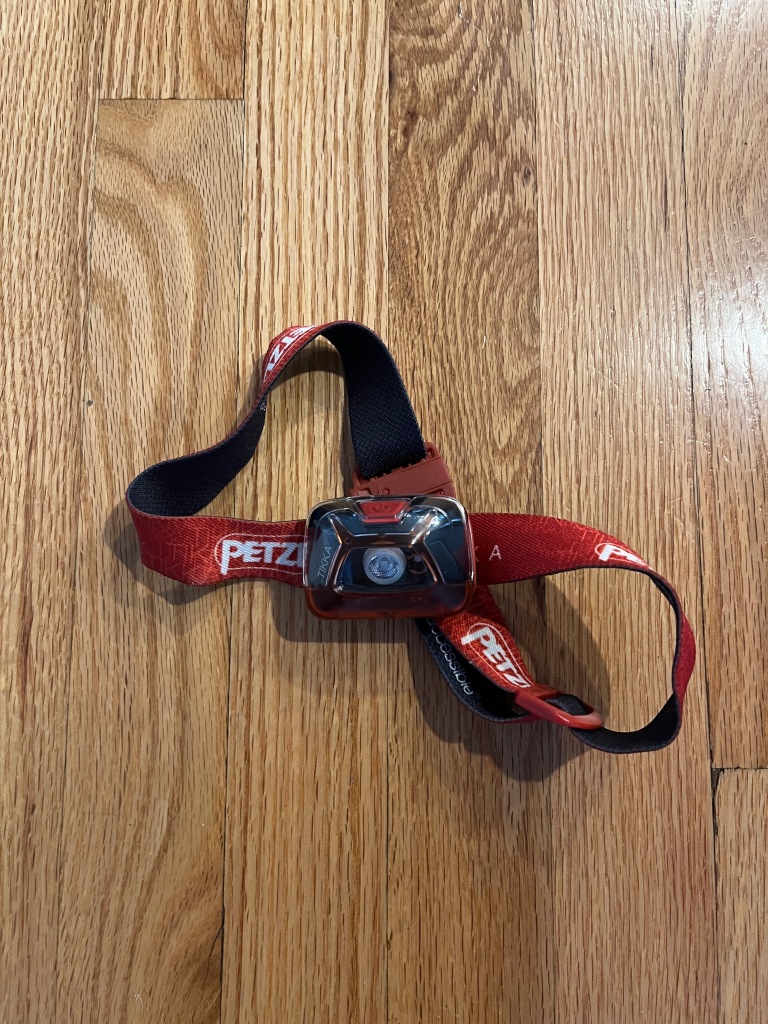
You’ll need a headlamp. There are more powerful models, but I use this Petzl. It’s bright enough to get me through trails in the woods in full dark, and more importantly is rechargeable so I’m not constantly cycling through batteries – here’s the battery by the way. I wish it charged via USB-C rather than micro-USB, but that’s about my only complaint.
RAIN
Rain Coat
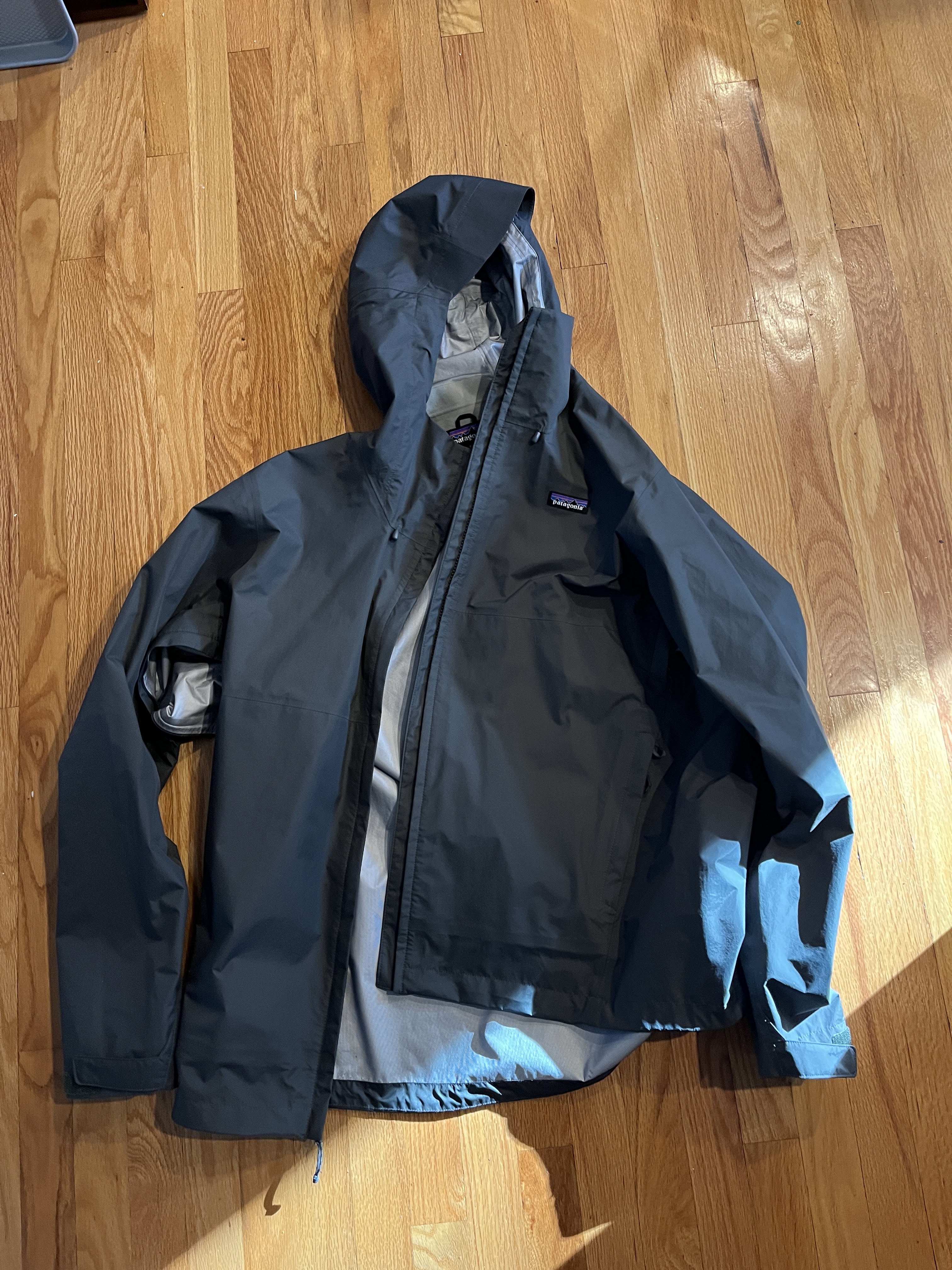
You may read that and think, “duh.” But I was literally dumb enough to go out for months wearing an old raincoat where the water repellent was peeling off like the paint on a hundred year old house. I finally replaced it with a Patagonia Torrentshell and that’s been excellent. More waterproof than my old one, more breathable and it has big side vents for when it’s warm out.
Rain Pants

As I was telling coworkers this week, this was the biggest game changer for me. Even after upgrading my raincoat, in heavy rains I’d be dry up top but soaked below the waist before I even got down to the main road. To the point that my pants would get so waterlogged, my shoes would fill up with water and overflow. Eventually, with a big storm forecast to drop multiple inches of rain during my available window during the day, I went out and got rain pants – Grundens Trident. I wish they had side pockets, but otherwise they’re great and keep my legs and my feet dry.
Waterproof Footwear

I could have gone the waterproof trail running shoe route, but instead I killed two birds with one stone and started incorporating my Hoka Anacapa hiking boots. They’re almost as lightweight as my regular running shoes, but they’re waterproof. Between the coat, pants and boots even in heavy rain I can stay 90-95% dry, which is a massive improvement over this time last year.
And it beats waiting two or three days waiting for regular sneakers to dry after they get soaked.
STORAGE
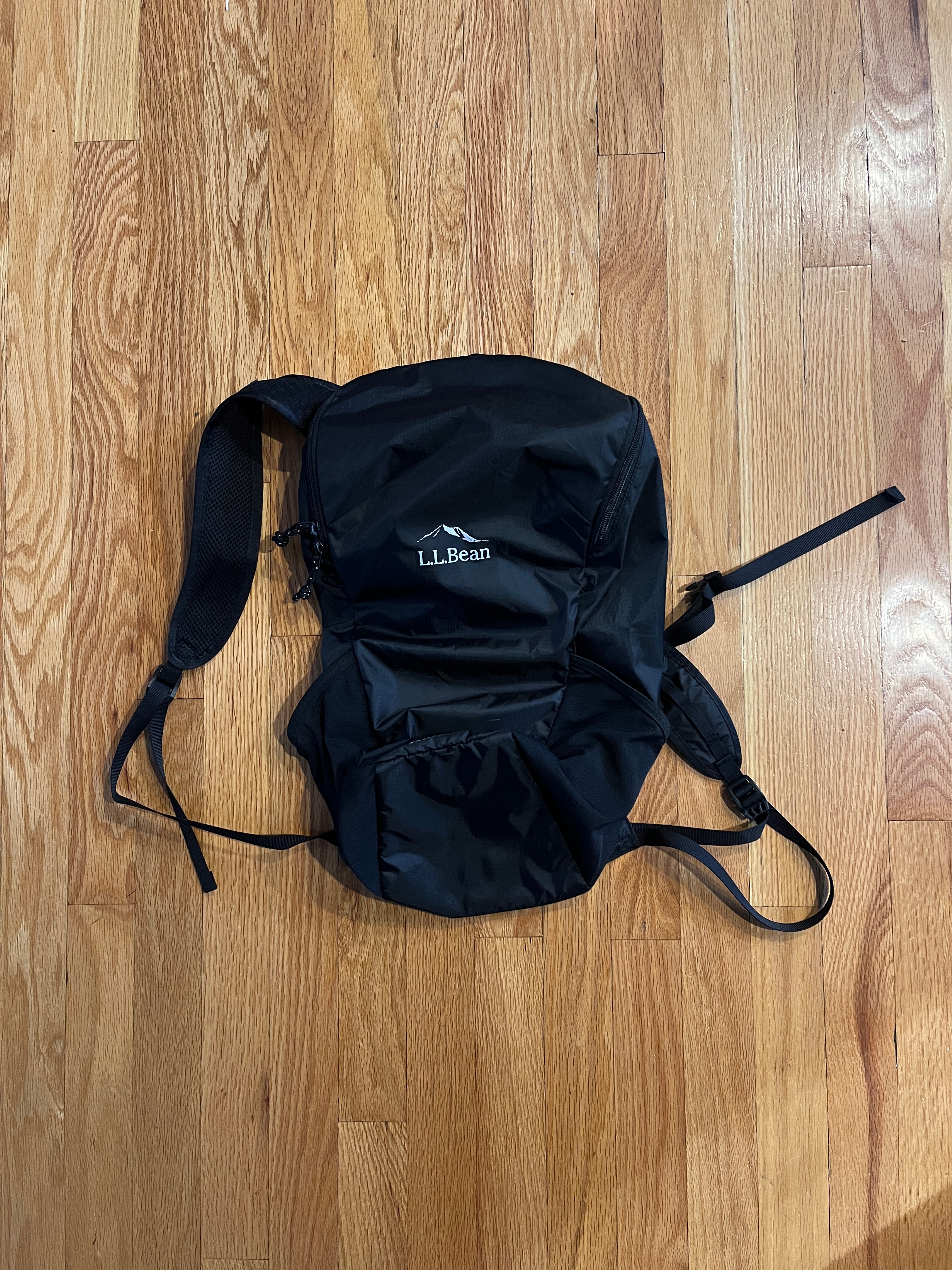
I don’t bring along a bag every walk, particularly those of shorter duration, but the more layers I have on or the more uncertain the weather is, the handier it is to have a bag – and more particularly something tiny and light that you don’t notice. This LL Bean bag is tiny, ultralight and cheap. I’ve used it to carry everything from discarded gloves to stripped outer layers to trailside trash to the beer I shotgunned trailside after completing my annual mileage goal. It’s perfect for what I need it to do.
ICE

If you’re going to walk when there’s ice, you need cramp-ons. Just trust me on this. The Yaktrax are not only Wirecutter recommended, they were Mainer approved when I asked around. They’re a bit hard to get on while wearing gloves, but it’s not too difficult and it beats the hell out of falling.
SUN
Sunglasses
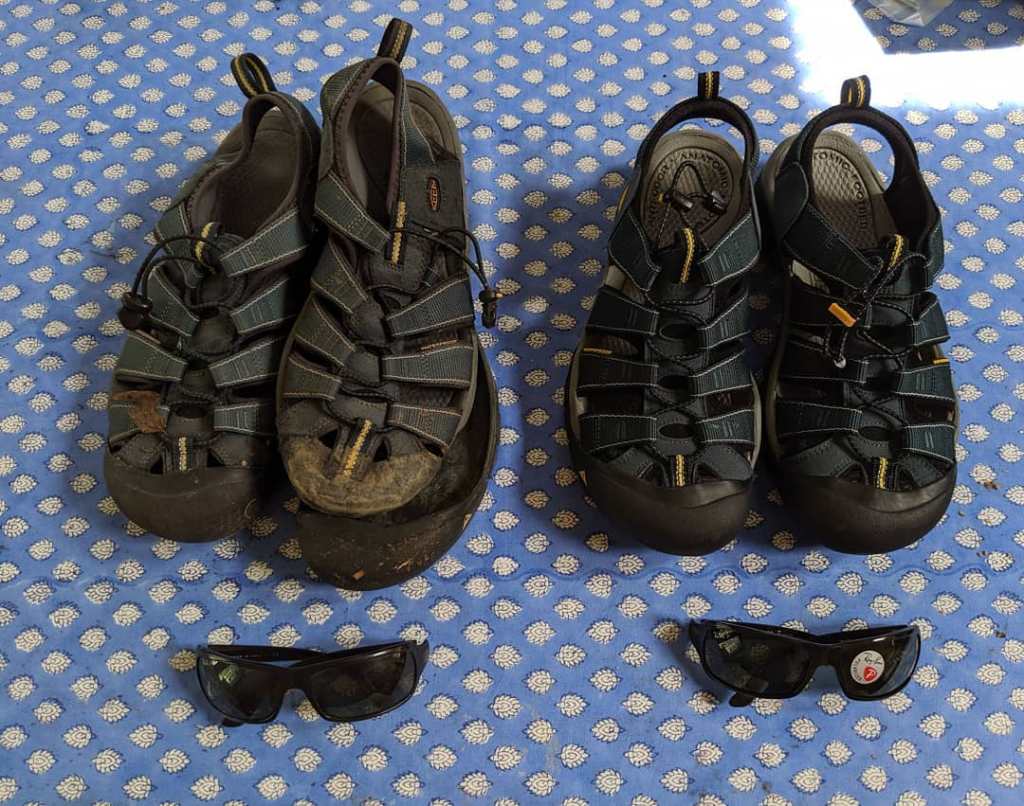
Obviously. I’ve had a pair of black black Ray-Bans for fifteen years or so, and when they broke I went out and bought exactly the same glasses – much to the chagrin of the more fashionable member of our household. So you probably don’t want what I have. Just make sure you have something to protect yourself.
Something that’s hopefully more fashionable than what I have.
Sunscreen
I’m no expert on this, but as I saw a video in which a guy had to have part of his ear removed because he didn’t wear it, it’s probably a good idea. If you’re going to be anywhere near the water, make sure to pick something reef safe.
WARM/HOT
Hat

I wear my Sox hat, obviously, and you should wear one too. But anything that keeps the sun off your head and shades your eyes a bit will do. Bonus points if it shades your ears, otherwise sunscreen (see above).
Boxers
Don’t worry, I’m not going to put up pictures of my underwear. I used to wear cotton oxford cloth boxers, but cotton being cotton I’ve now swapped them out for these merino boxers from Woolx. They’re great; breathable, wick moisture and are comfortable.
Shorts

My shorts are a set of ordinary black Nike nylon shorts and an equivalent Under Armour set with a Williams logo on it. If you’re an Eph, you can get the latter set here. But it doesn’t really matter; shorts are not something I’ve felt a need to invest much in.
T-shirt
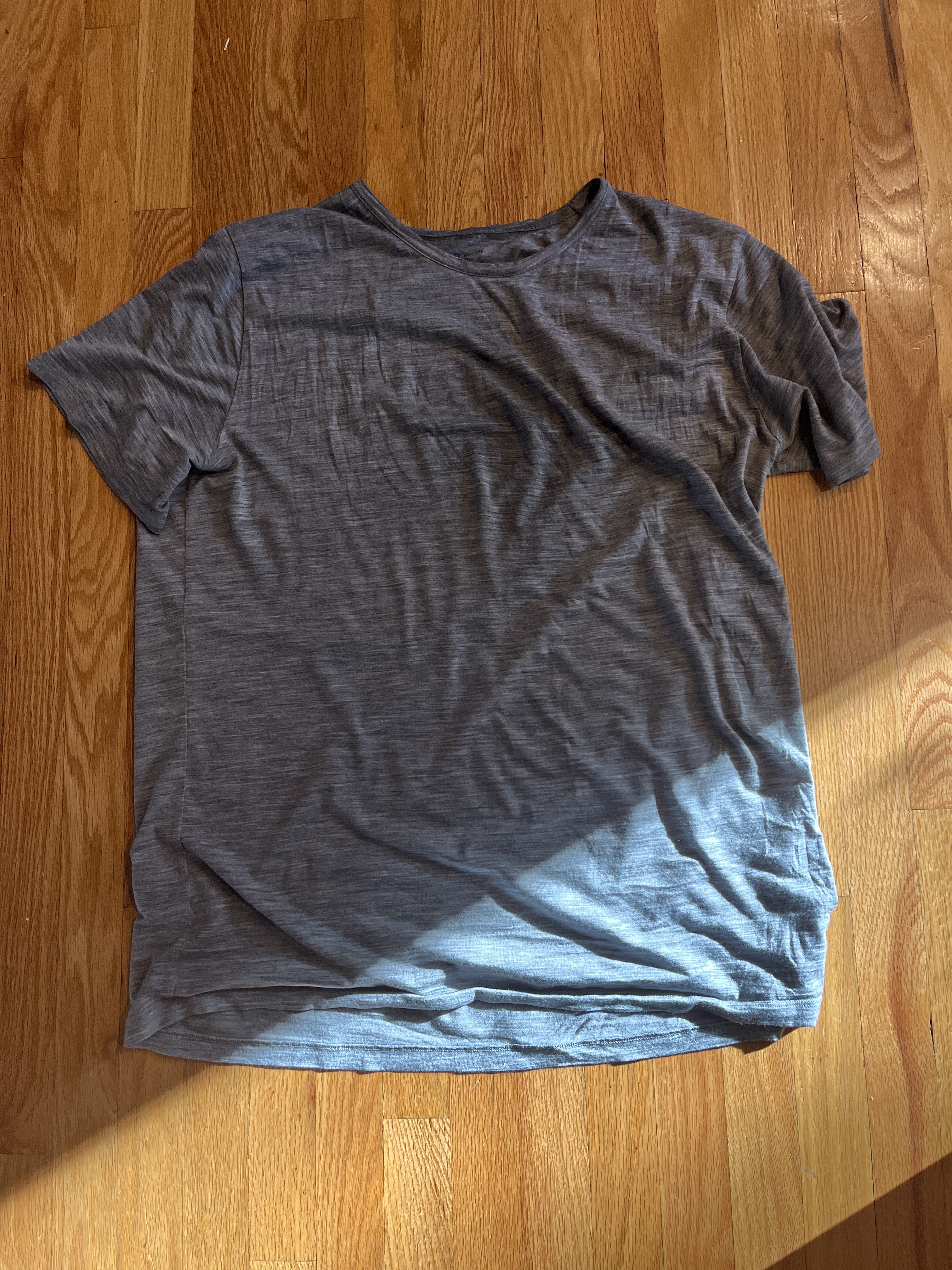
I wanted to solve two problems with my t-shirts. First, I was tired of picking out different shirts every day, so I wanted all of my t-shirts to be exactly the same (you might notice a theme here). Second, I wanted them to be merino wool rather than cotton so they wouldn’t chill me in winter. After evaluating shirts from Wool & Prince, Woolx and Taylor Stitch I eventually settled on the latter because they’re slightly cheaper and because they’re almost entirely merino, as opposed to the others which incorporate more synthetics.
The wool t-shirts are fantastic in cooler temps, and while I sweat through them in summer, that’s no different from cotton. I wear these Merino Tees, then, year round and just rotate through an identical set picking up a new, identical fresh one every day.
Socks
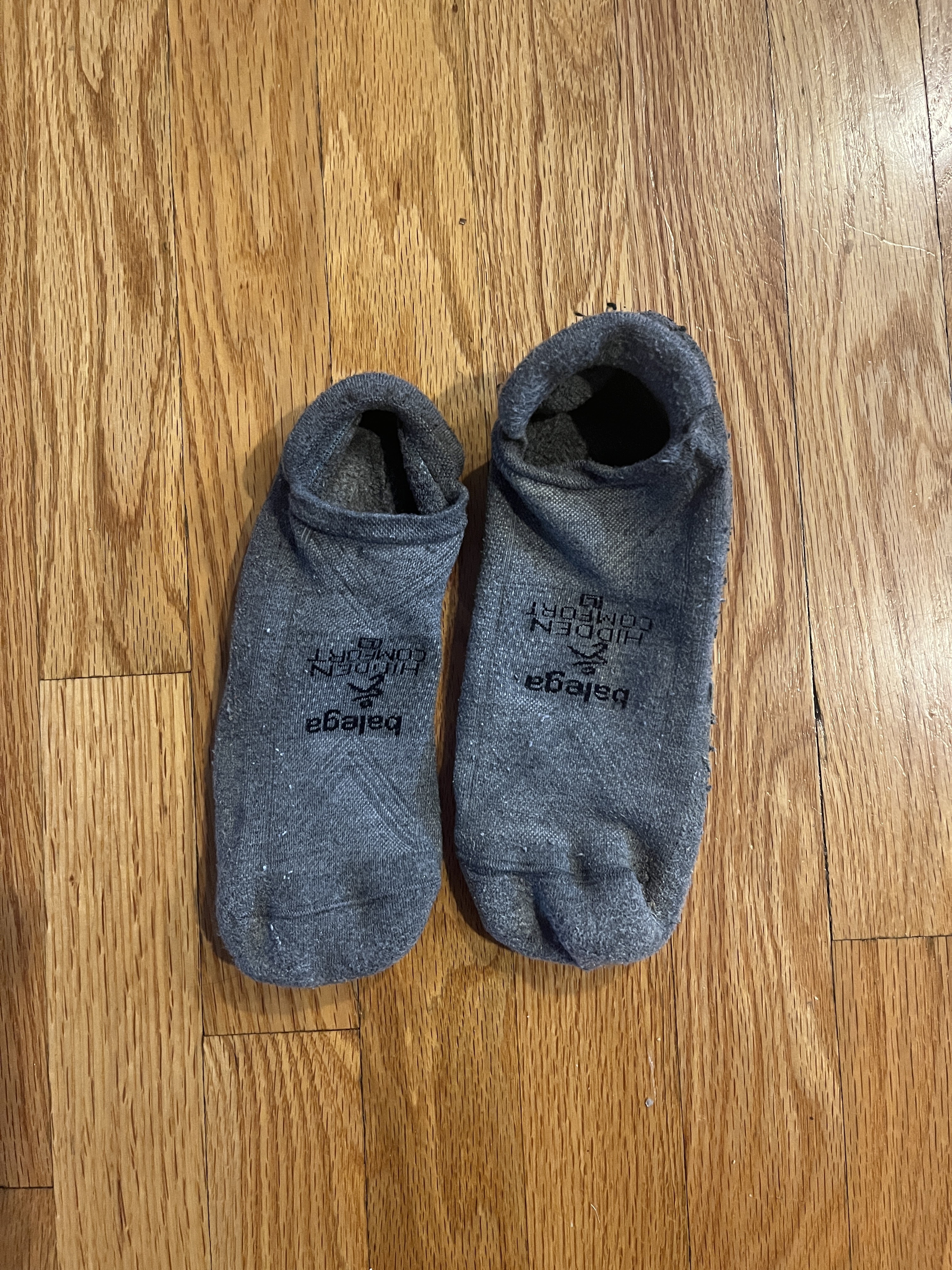
As I explained it to someone a couple of weeks ago, these Balegas are socks for people who hate socks. They’re easy on, easy off, they’re low profile enough you forget that you have them on and they’re excellent at resisting foot stink. Like the t-shirts, I’ve got a bunch of these and just cycle through them.
Sneakers
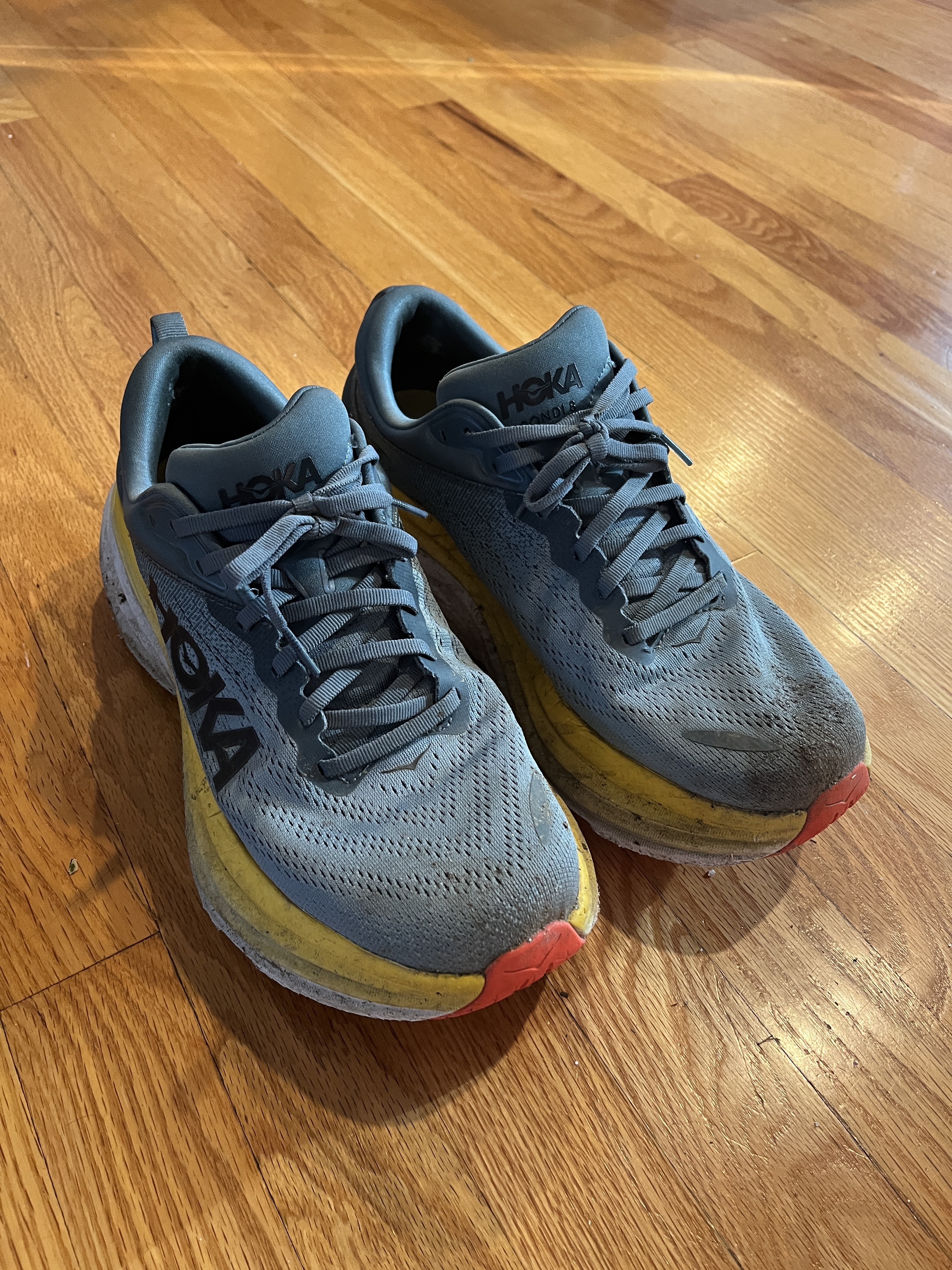
I’ve already talked about this a number of times, but the tl;dr is that I’d never heard of Hoka’s before reading a recommendation for them on a Fleet Feet review. I’m now on my sixth pair of Bondis. If you’re looking for a heavily cushioned shoe, and in my opinion you should be, you won’t do any better.
COOL
Glove Liners
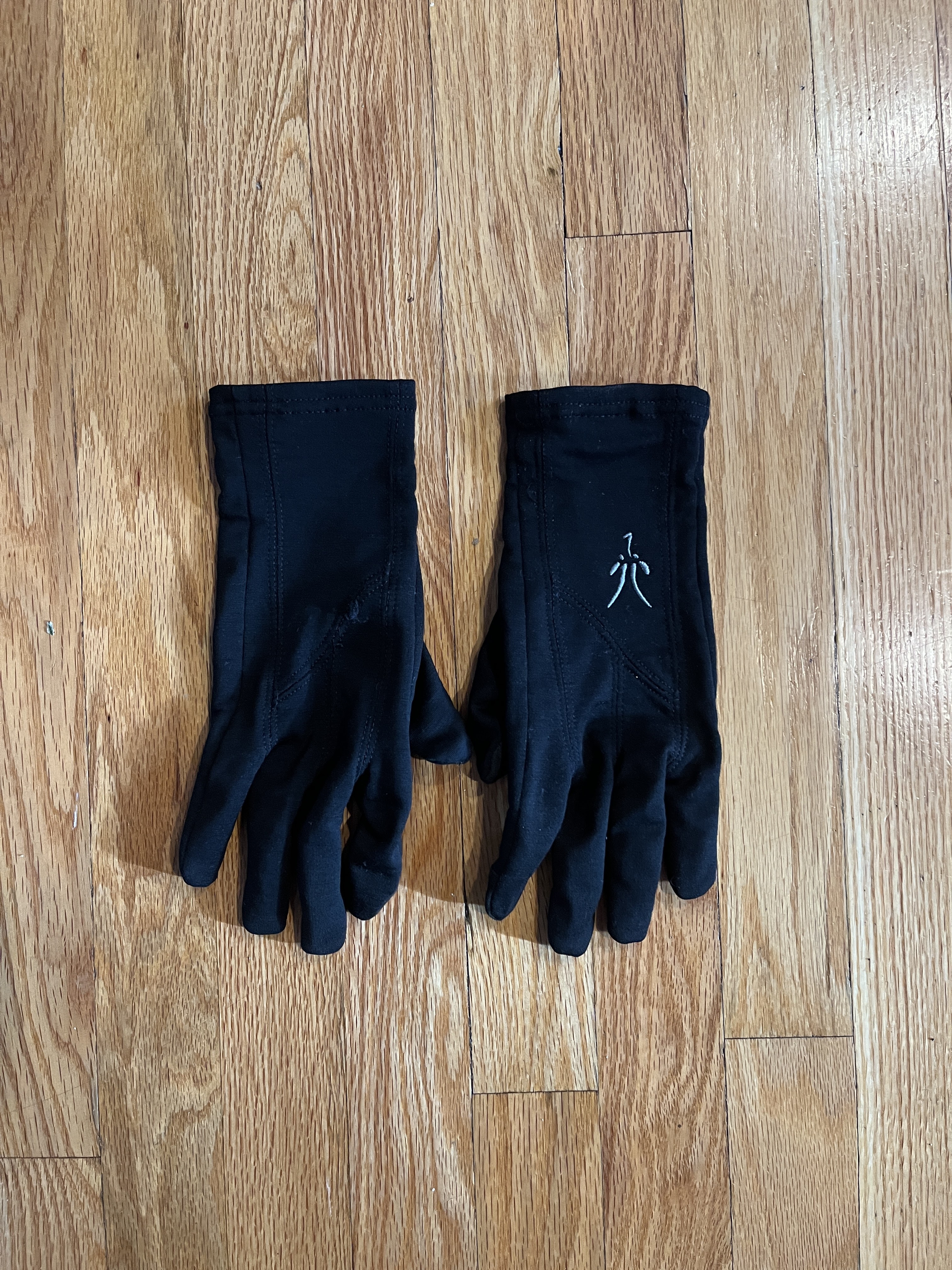
When I started out walking, and it was cool but not cold enough to wear my ski gloves, I tried to find something that worked. I tried my work gloves, as one example, but those either had holes in them or the insulated set proved to be too warm. Eventually I ended up getting a set of Ibex merino glove liners. These killed several birds with one stone: first, they provide enough warmth to keep my hands mostly warm for cooler temps. Second, they serve as replacement liners for my ski gloves which are so old the liners have worn out. Lastly, in both scenarios, they have touchpad fingers which allow me to use the touchscreen on my phone without completely taking off my gloves – which is huge in the winter.
Hat

When I started out, I just wore whatever winter hats I had available – and that will work. But if you’re putting in a lot of mileage, and sweating, you might find that your forehead gets irritated and even breaks out in some light acne. After reading a recommendation online, I switched to this Minus33 100% merino hat, partly on the theory that its antimicrobial nature would be better than polyester alternatives but mostly because I was already sold on merino. This hat is soft and warm, and perfect for all but the coldest temps.
Vest
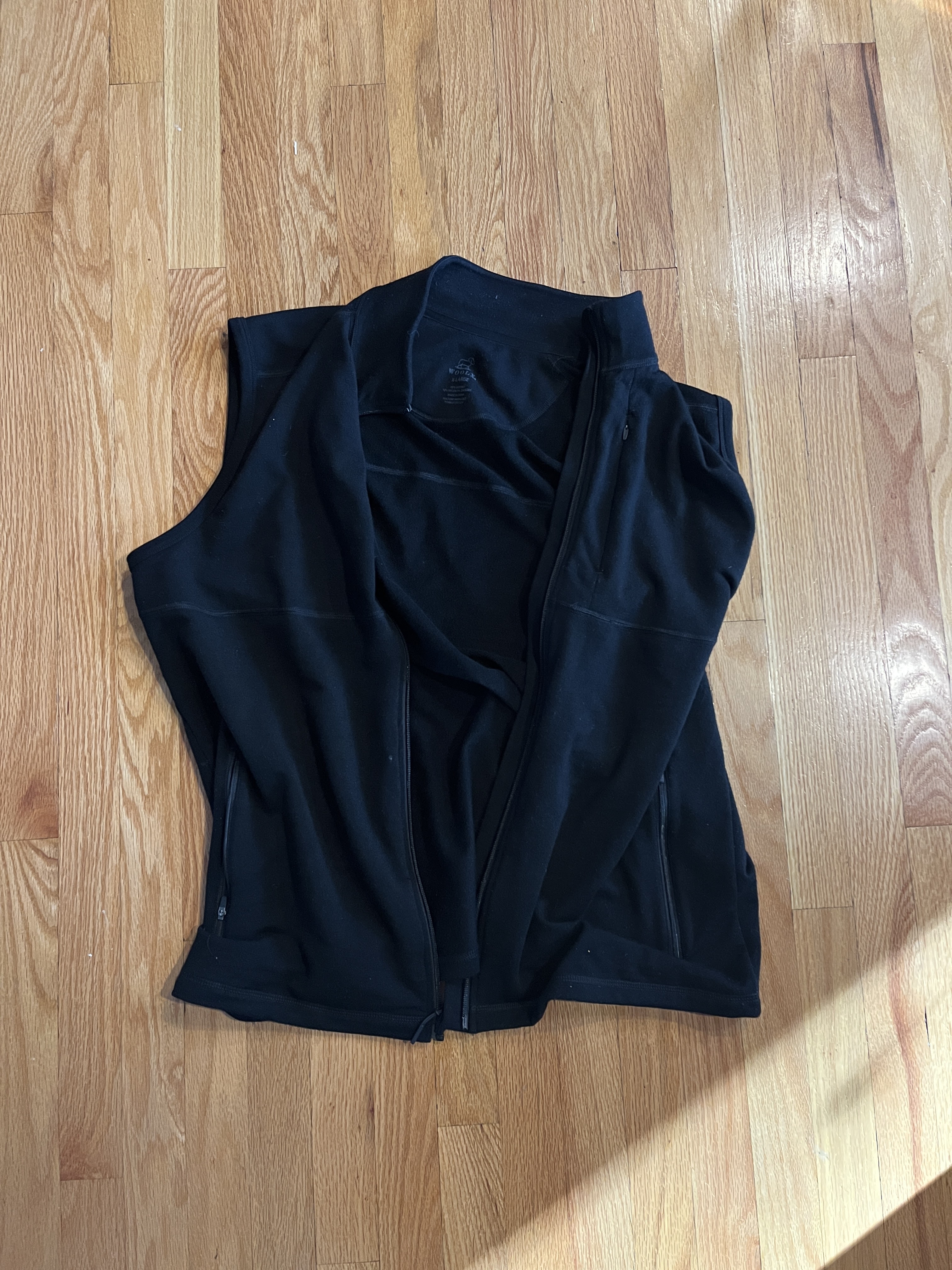
Out of all cold weather clothing, I probably wear a vest the most. Indoors, outdoors, whether it’s over a t-shirt or as an additional layer under a jacket or on top of my 1/4 zip, I wear a vest all the time. For years that was an Ibex, and their Shak vests are fantastic, but having had luck with their their hoodies and preferring the lower cost, I got this Woolx vest when I needed a new one. It does exactly what I need it to do, and is exceptionally lightweight.
1/4 Zip
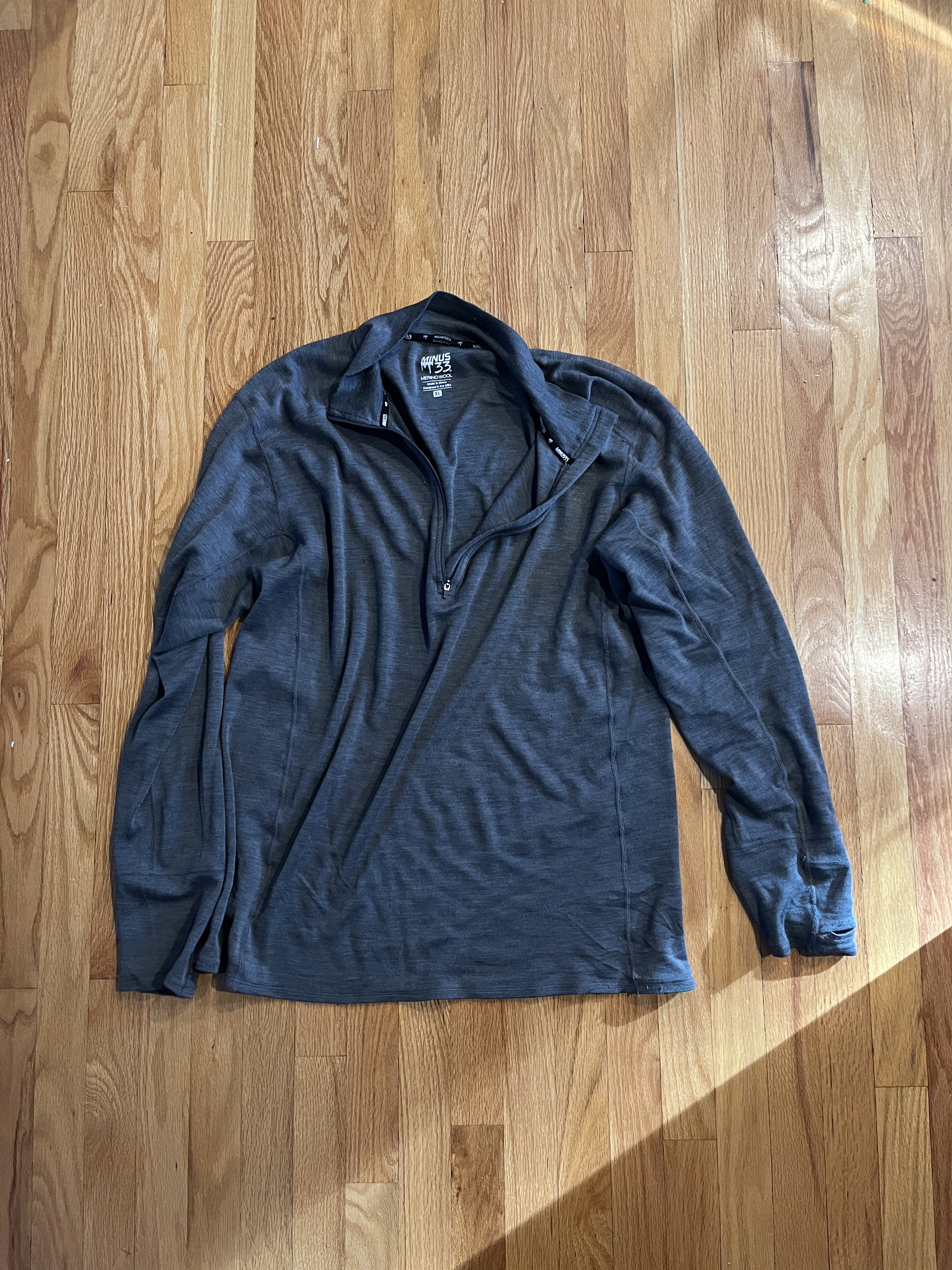
If it’s not windy, the Minus33 1/4 zip is an excellent layer on top of my t-shirts. I’d never had a 1/4 zip until Kate got me one last Christmas, but they’re hugely versatile. It provides lightweight warmth, even in passing showers, and if you get too hot while you’re out, you can unzip the top, roll up your sleeves and be perfectly comfortable.
Lightweight Hoodie

If it’s a little toward the cooler end of the spectrum, if there are higher winds or both it can be nice to have a layer slightly thicker than a 1/4 zip that has a hood you can pop up for colder spots. For this I have a Woolx Boulder hoodie. It’s lightweight enough to wear indoors in houses (like ours) that are cool – and it’s great for flying in – but it shines on walks that are cool but not cold, and as mentioned if the wind kicks up you can throw on the hood for an extra layer of warmth.
Pants

When people buy clothes for me it usually doesn’t go well, but early in the pandemic Kate got me a set of these “athleisure” UGG fleece pants – I know, I know – but they’re really excellent. They provide the warmth and ease of movement of sweatpants, without the irritating tight bottom cuffs that leave your ankles exposed in cold temperatures. Can’t say enough about them, and they’re great to fly in as well.
COLD
Buffs

Surprisingly useful, buffs or neck gaiters are great for keeping your throat and neck warm, and optionally your face as well. I’ve got two: a synthetic one I got from my Flyathlon-running BFF Andrew Todd which is great for cool temperatures, and then a slightly thicker merino one from Woolx. Which one I choose depends on the outside temperature.
Gloves
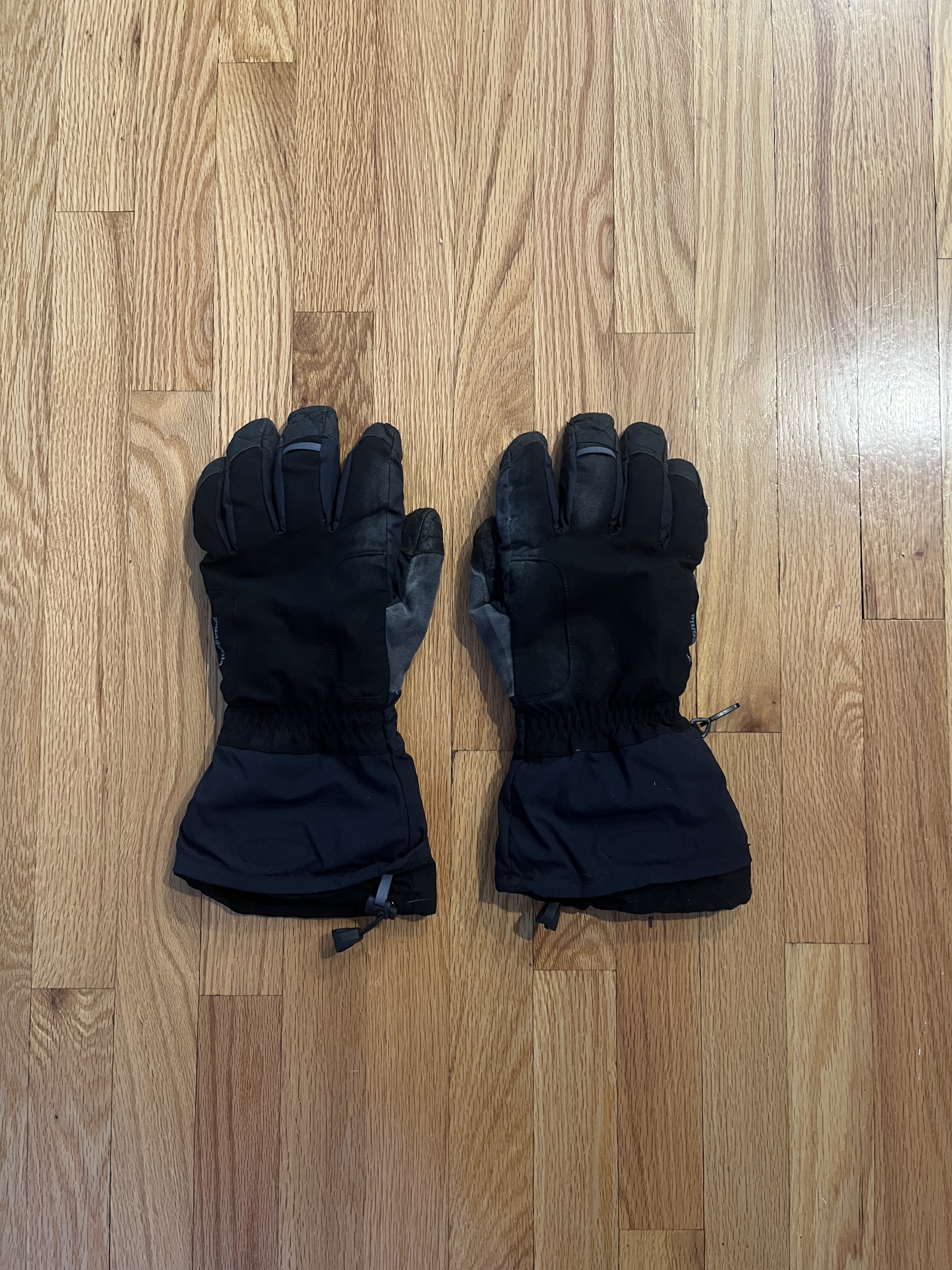
When it’s too cold for the glove liners alone, I bust out a very old set of Patagonia ski gloves. They wouldn’t be enough on their own, because as mentioned the liners are shot, but the combination of glove liner and outer gauntlet style glove is great for colder temps.
Heavyweight Hoodie
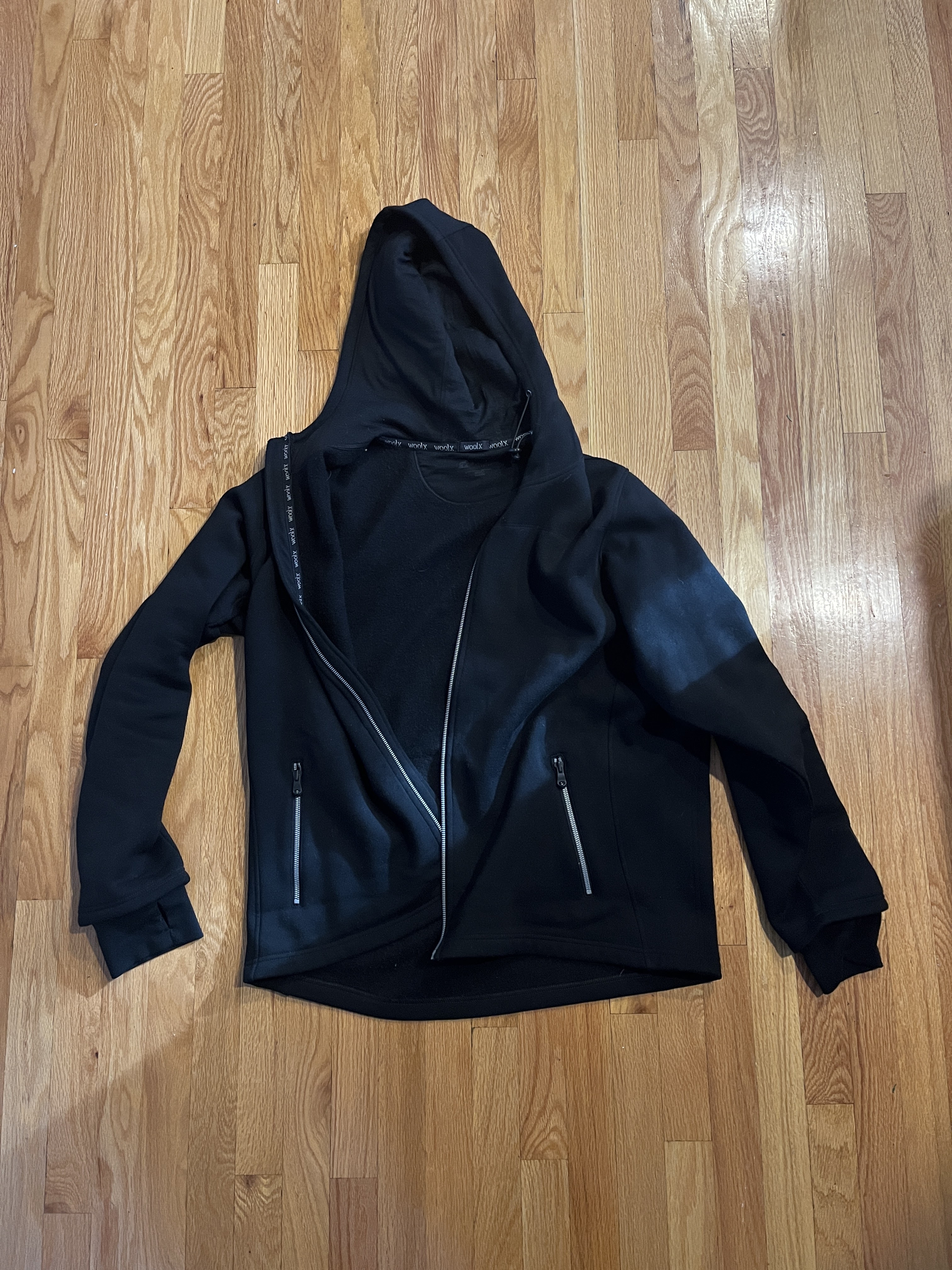
The midweight hoodie is great up to a point, but is thin enough that it can’t handle legitimately cold temperatures. For that, I swap in my heavyweight alternative, the Woolx Grizzly hoodie. It’s the heaviest weight merino hoodie I’ve found, and is perfect for colder temps either on its own at the higher end of the range, or with underlying base layers if it’s colder than that. This plus the 1/4 zip, for example, is great combination.
Soft Shell

As mentioned at the top, my soft shell is an old Patagonia jacket – so old, in fact, that the label has rubbed off and I can’t tell which model. But basically the soft shell is a thin insulated layer with a mostly windproof and water resistant exterior. If there’s wind, rain or both, then, that makes the hoodie unsuitable, I throw on the soft shell. It gives me similar warmth but is better protection against wind, rain and snow.
Socks
Nothing fancy here; anything long and reasonably thick from Smartwool will do.
BLIZZARD / DEEP COLD
Hat

While the Minus33 hat I have above is excellent, it’s not all that heavyweight. When it’s really cold, then, I throw on a heavier weight merino hat from Ibex. It’s a little scratchier than the softer Minus33 hat, but a lot warmer for cold temperatures.
Goggles

No specific recommendations here, just wear whatever ski goggles you have on hand.
Scarf

When the winds are high enough to cut through the buffs, I swap in a scarf – or what Skida refers to as a “bandana.” It’s got windstopping material on one side, and fleece on the interior, and it’s excellent at keeping wind off your face. Be aware, however, that if it’s cold enough, like anything else that is absorbing water vapor from your mouth in frigid temperatures, it will eventually freeze solid.
Long Underwear
Eventually I’ll replace this with a merino equivalent, but for now when it’s really cold I throw on synthetic long underwear – an old set of Patagonia long johns.
Hard Shell

By far the oldest gear I still have is an old North Face ski parka. It’s a hard, waterproof shell that is a great outer layer in deep cold, high wind or very wet conditions. It doesn’t get used all that much, fortunately.
Down Coat
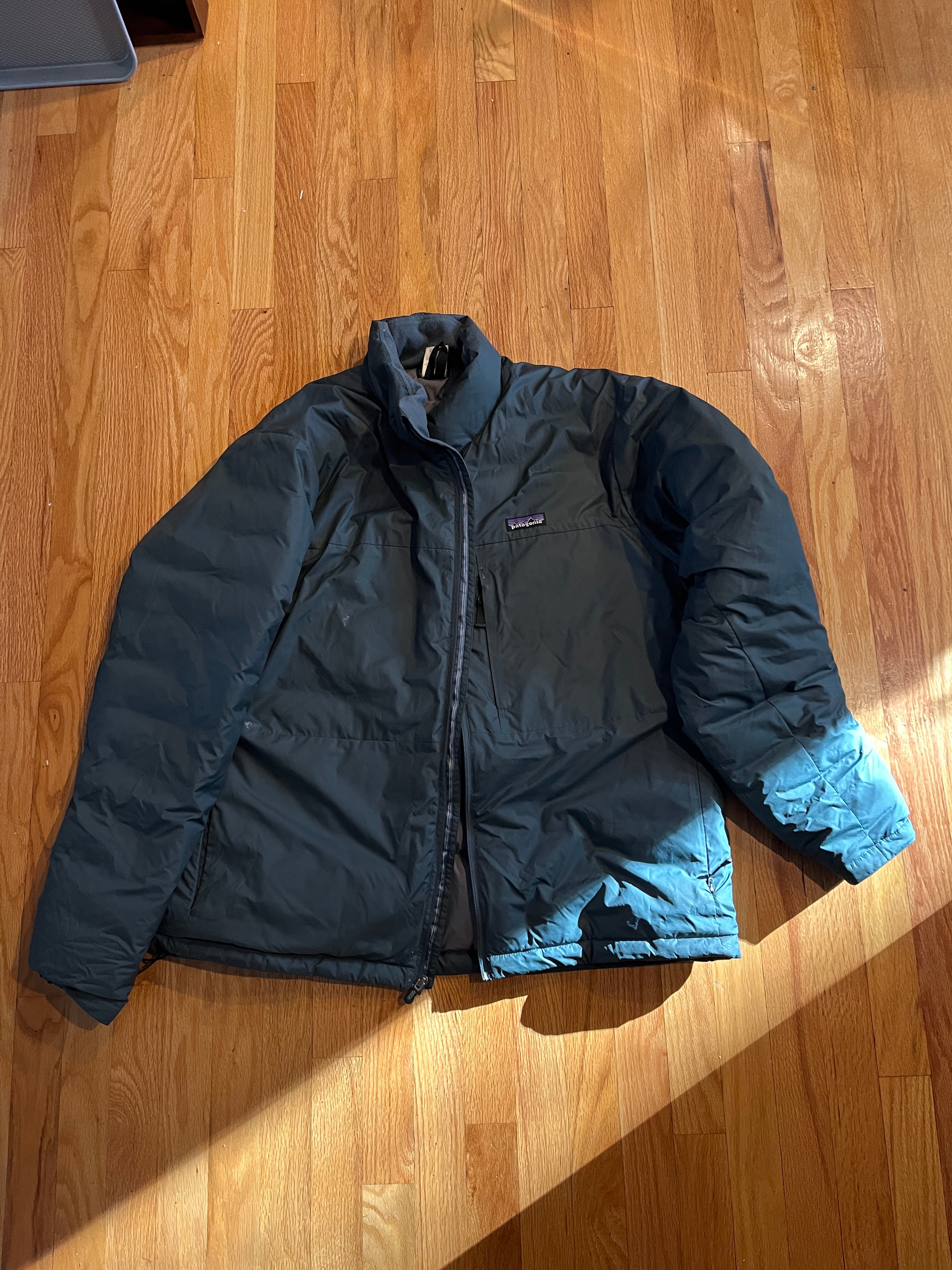
Another old Patagonia outlet find of indeterminate model, I only crank out my down coat if it’s legitimately cold – single digits or below zero. And even then, only if I’m not going too far, because it’s too easy to overheat while wearing thick down. Still, in deep cold over short distances, this is the easiest way to stay warm. I often don’t even have to wear anything more than a t-shirt underneath it’s so warm.
Snow Pants

This will be a new addition to my arsenal this winter, as I wouldn’t have fit in my old snow pants a year ago at this time. They fit now, fortunately, and it’ll be nice to have them back and available for the same conditions that might necessitate my hard shell.
ACCESSORIES
- Books: Walk enough and you’ll want some audiobooks. Your local library is your cheapest route, but if you’re looking to give someone a present Audible gift certificates have worked well for us.
- Headphones: I switched from Jabra’s to Airpod Pro’s after my brother got them for me last Christmas. There’s been no real difference sound-wise, but the Airpods are much better at relaying notifications from text, Slack and otherwise – except, oddly, I can’t get them to pipe in updates from the Workout app on my Apple Watch. Speaking of.
- Watch: If you’re going to be walking long distances, you’re going to want to track that somehow. Both for motivational purposes as well as monitoring and managing your workload. The Apple Watch has worked well for me. While it’s battery life is abysmal relative to other fitness trackers from Fitbit to Garmin, it makes up for that by doing a bunch of things well. Whether or not an Apple Watch is for you, however, you’re going to want a tracker of some sort.
BONUS
Quick thoughts thoughts on merino vendors:
- Ibex: the brand rebooted a few years ago, and they haven’t quite duplicated the old gear, but it’s high end merino wear aimed mostly at athletes and seriously outdoor types. Good, but pricy.
- Minus33: the Carharrt of merino brands. Low(er) cost, workman like items.
- Taylor & Stitch: higher end clothing brand that also has some nice merino items. Bonus: two of the founders are Mainers!
- Woolx: specifically aimed “weekend warrior” types rather than high end outdoor athletes. More economical.